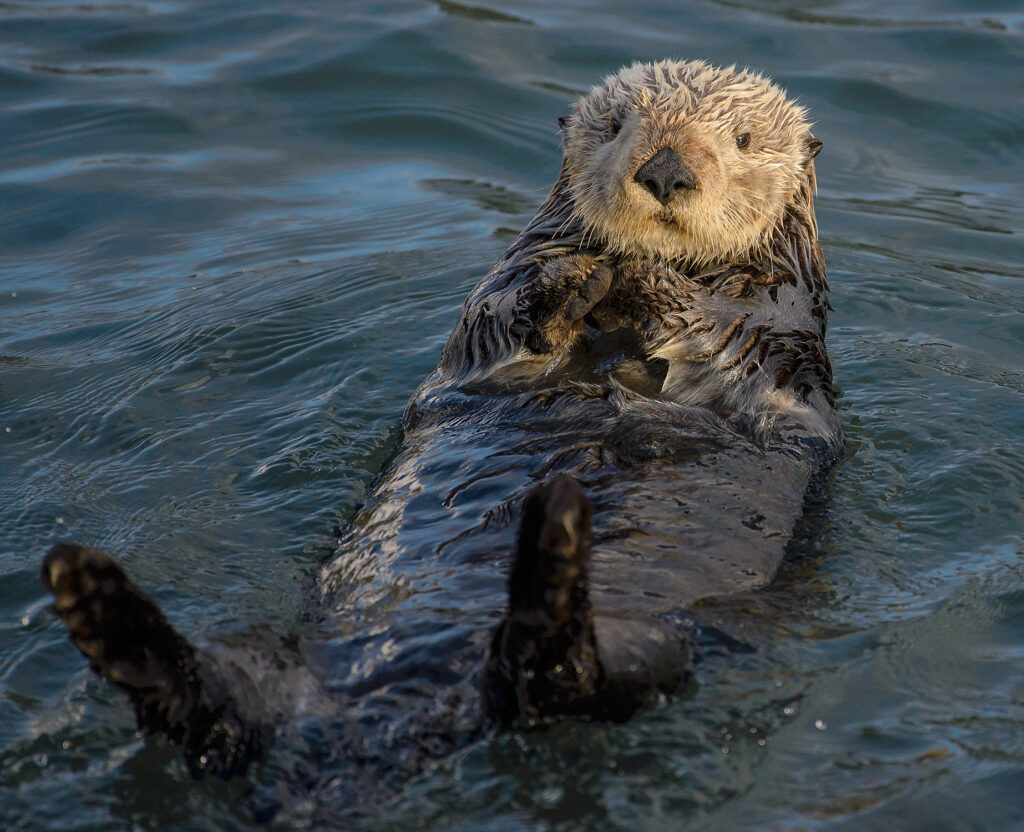California sea otters have come a long way from the 50-member population discovered off Big Sur in the early 1900s, the only survivors of a fur hunting bonanza. Listed as a threatened species in 1977, the population has exceeded its recovery goal of 3,090 animals for three of the last four years.
The challenges facing the species have also changed substantially. When the species was listed, the primary threat was oil spills which, due to the otter’s limited range, could cause the extinction of the species if a spill was large enough to affect the entire range. This threat has been reduced by technology making such a spill less likely as well as the otter’s range expansion.
Today, the primary goal for the otter is continuing that expansion, which has been limited by shark predation at the northern and southern edges of the otter’s current range. A new study estimates that reintroducing otters to San Francisco bay, thereby skipping over the waters patrolled by great white sharks, could triple the size of the population—more than enough to constitute the species’ recovery under the Endangered Species Act.
As with any predator reintroduction to an ecosystem, moving otters into San Francisco bay would involve significant tradeoffs. Otters lack blubber and, thus, must eat 25-30% of their body weight per day to keep warm. Their voracious appetites mean that otters deplete prey species, including commercially valuable shellfish. In the San Francisco Bay estuary, this could mean significant reductions in crab harvests, as well as the potential destruction of oyster farms—both important sources of revenue to local fishermen.
Additionally, the regulations that accompany otters impose significant costs for a wide variety of the estuary’s users. The Endangered Species Act and Marine Mammal Protection Act both forbid “take” of the otter, which has been defined broadly to include activities that disturb species or their habitat. Even if the species were delisted under the Endangered Species Act, the Marine Mammal Protection Act would apply indefinitely. Thus, anyone in the estuary would be at risk of substantial civil and criminal penalties should they accidentally encounter an otter, unless they first obtain an expensive and time-consuming federal permit.
In theory, these obstacles could be overcome by a compromise that advanced the otter’s recovery while also mitigating the costs imposed on those who work and play in the bay. But, in practice, such compromises require trust between regulators and stakeholders. Ironically, a past, successful otter reintroduction effort makes such compromise extremely unlikely, if not impossible.
In the 1980s, the U.S. Fish and Wildlife Service developed a plan to introduce sea otters to San Nicolas Island, one of the channel islands. To obtain congressional approval, the agency negotiated a compromise with fishermen and other stakeholders to protect them from some of the consequences of this reintroduction, including a guarantee that they wouldn’t face civil and criminal penalties for incidental take as the otters expanded into the surrounding fishery. Despite some initial hurdles, the plan worked and, today, the San Nicolas Island population is credited with boosting the species over its recovery goal (thanks to an impressive 10% annual growth rate over the last decade).
Even as the federal government trumpeted the reintroduced population’s success, the U.S. Fish and Wildlife Service sought to undo the compromise by declaring the population a “failure,” solely because the initial hurdles caused the population to miss a preliminary target decades earlier. In doing so, the agency also announced that it would no longer honor the conditions Congress imposed on the population’s creation, including the fishermen’s protections against civil and criminal penalties.
As I wrote at the time,
If property owners fear that, by preserving species or habitat, they are courting ruin, they’ll stop. And if agencies don’t honor agreements, they will poison the well for future collaborations. After what happened with the sea otter, how likely are Southern California’s fishermen to be willing to work with the Service again to help otters or any other environmental issue?
For the otter’s sake, one hopes that a compromise could be reached allowing for the population explosion that the study’s authors predict. But who could blame any fishermen, oyster farmer, boat operator, or anyone else who uses the bay for distrusting any agency promise, after seeing what happened to Southern California fishermen? Although the otter may have benefited marginally from increased regulation around San Nicolas Island, the erosion of trust causes in the long run greater harm for both species and people, by making innovative, collaborative solutions needlessly more difficult.




